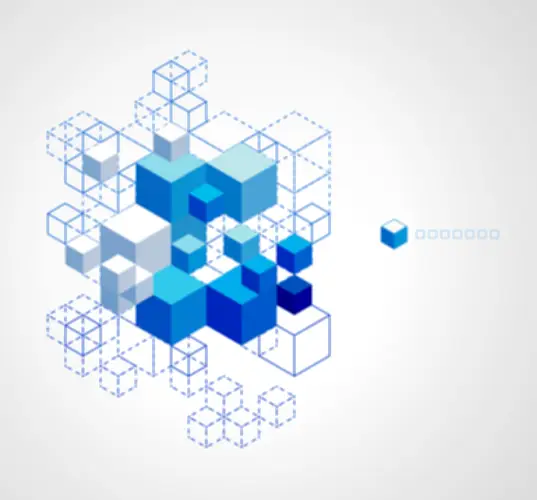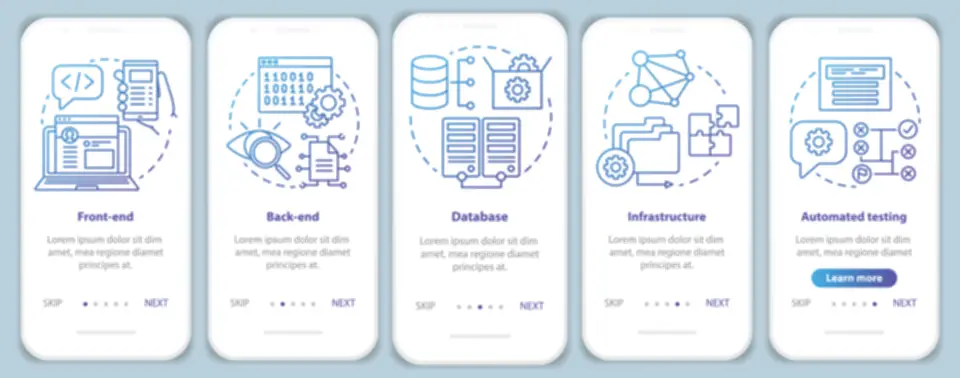What Is Cognitive Automation: Examples And 10 Best Benefits

There are a lot of use cases for artificial intelligence in everyday life—the effects of artificial intelligence in business increase day by day. New insights could be revealed thanks to cognitive computing’s capacity to take in various data properties and grasp, analyze, and learn from them. These prospective answers could be essential in various fields, particularly life science and healthcare, which desperately need quick, radical innovation. TalkTalk received a solution from Splunk that enables the cognitive solution to manage the entire backend, giving customers access to an immediate resolution to their issues. Identifying and disclosing any network difficulties has helped TalkTalk enhance its network. As a result, they have greatly decreased the frequency of major incidents and increased uptime.
Among them are the facts that cognitive automation solutions are pre-trained to automate specific business processes and hence need fewer data before they can make an impact; they don’t require help from data scientists and/or IT to build elaborate models. They are designed to be used by business users and be operational in just a few weeks. Cognitive automation has a place in most technologies built in the cloud, said John Samuel, executive vice president at CGS, an applications, enterprise learning and business process outsourcing company. His company has been working with enterprises to evaluate how they can use cognitive automation to improve the customer journey in areas like security, analytics, self-service troubleshooting and shopping assistance.
It adjusts the phone tree for repeat callers in a way that anticipates where they will need to go, helping them avoid the usual maze of options. AI-based automations can watch for the triggers that suggest it’s time to send an email, then compose and send the correspondence. Unlike traditional unattended RPA, cognitive RPA is adept at handling exceptions without human intervention.
“Cognitive automation multiplies the value delivered by traditional automation, with little additional, and perhaps in some cases, a lower, cost,” said Jerry Cuomo, IBM fellow, vice president and CTO at IBM Automation. This shift of models will improve the adoption of new types of automation across rapidly evolving business functions. Chat GPT CIOs will derive the most transformation value by maintaining appropriate governance control with a faster pace of automation. “As automation becomes even more intelligent and sophisticated, the pace and complexity of automation deployments will accelerate,” predicted Prince Kohli, CTO at Automation Anywhere, a leading RPA vendor.
- IA is capable of advanced data analytics techniques to process and interpret large volumes of data quickly and accurately.
- This could involve the use of a variety of tools such as RPA, AI, process mining, business process management and analytics, Modi said.
- A cognitive automation solution for the retail industry can guarantee that all physical and online shop systems operate properly.
- Employee time would be better spent caring for people rather than tending to processes and paperwork.
- Cognitive automation techniques can also be used to streamline commercial mortgage processing.
He observed that traditional automation has a limited scope of the types of tasks that it can automate. For example, they might only enable processing of one type of document — i.e., an invoice or a claim — or struggle with noisy and inconsistent data from IT applications and system logs. Cognitive automation promises to enhance other forms of automation tooling, including RPA and low-code platforms, by infusing AI into business processes.
Use case 5: Intelligent document processing
As mentioned above, cognitive automation is fueled through the use of Machine Learning and its subfield Deep Learning in particular. And without making it overly technical, we find that a basic knowledge of fundamental concepts is important to understand what can be achieved through such applications. With light-speed jumps in ML/AI technologies every few months, it’s quite a challenge keeping up with the tongue-twisting terminologies itself aside from understanding the depth of technologies. To make matters worse, often these technologies are buried in larger software suites, even though all or nothing may not be the most practical answer for some businesses.
Down the road, these kinds of improvements could lead to autonomous operations that combine process intelligence and tribal knowledge with AI to improve over time, said Nagarajan Chakravarthy, chief digital officer at IOpex, a business solutions provider. You can foun additiona information about ai customer service and artificial intelligence and NLP. He suggested CIOs start to think about how to break up their service delivery experience into the appropriate pieces to automate using existing technology. The automation footprint could scale up with improvements in cognitive automation components. As CIOs embrace more automation tools like RPA, they should also consider utilizing cognitive automation for higher-level tasks to further improve business processes. RPA tools were initially used to perform repetitive tasks with greater precision and accuracy, which has helped organizations reduce back-office costs and increase productivity. While basic tasks can be automated using RPA, subsequent tasks require context, judgment and an ability to learn.
How can cognitive automation help your business?
The coolest thing is that as new data is added to a cognitive system, the system can make more and more connections. This allows cognitive automation systems to keep learning unsupervised, and constantly adjusting to the new information they are being fed. Automating time-intensive or complex processes requires developing a clear understanding of every step along the way to completing a task whether it be completing an invoice, patient care in hospitals, ordering supplies or onboarding an employee. “One of the biggest challenges for organizations that have embarked on automation initiatives and want to expand their automation and digitalization footprint is knowing what their processes are,” Kohli said.
What Is Intelligent Automation (IA)? – Built In
What Is Intelligent Automation (IA)?.
Posted: Thu, 14 Sep 2023 20:03:29 GMT [source]
The exploration of these issues is of paramount importance and warrants additional research both for understanding the mechanisms and developing pharmacological interventions for CF prevention. Currently, the physical elements of CF are mostly screened using the Cardiovascular Health Study criteria, but there is a lack of consistency in the screening instruments for the cognitive component of this construct47. “Cognitive automation can be the differentiator and value-add CIOs need to meet and even exceed heightened expectations in today’s enterprise environment,” said Ali Siddiqui, chief product officer at BMC. Please be informed that when you click the Send button Itransition Group will process your personal data in accordance with our Privacy notice for the purpose of providing you with appropriate information. Data governance is essential to RPA use cases, and the one described above is no exception.
Microsoft Cognitive Services
For instance, bespoke AI agents could automate setting up meetings, collecting data for reports, and performing other routine tasks, similar to verbal commands to a virtual assistant like Alexa. Cognitive automation can uncover patterns, trends and insights from large datasets that may not be readily apparent to humans. To manage this enormous data-management demand and turn it into actionable planning and implementation, companies must have a tool that provides enhanced https://chat.openai.com/ market prediction and visibility. Attempts to use analytics and create data lakes are viable options that many companies have adopted to try and maximize the value of their available data. Yet these approaches are limited by the sheer volume of data that must be aggregated, sifted through, and understood well enough to act upon. But as those upward trends of scale, complexity, and pace continue to accelerate, it demands faster and smarter decision-making.

Many organizations have also successfully automated their KYC processes with RPA. KYC compliance requires organizations to inspect vast amounts of documents that verify customers’ identities and check the legitimacy of their financial operations. RPA bots can successfully retrieve information from disparate sources for further human-led KYC analysis. In this case, cognitive automation takes this process a step further, relieving humans from analyzing this type of data.
IT Operations
The value of intelligent automation in the world today, across industries, is unmistakable. With the automation of repetitive tasks through IA, businesses can reduce their costs and establish more consistency within their workflows. The COVID-19 pandemic has only expedited digital transformation efforts, fueling more investment within infrastructure to support automation. Individuals focused on low-level work will be reallocated to implement and scale these solutions as well as other higher-level tasks. The biggest challenge is that cognitive automation requires customization and integration work specific to each enterprise. This is less of an issue when cognitive automation services are only used for straightforward tasks like using OCR and machine vision to automatically interpret an invoice’s text and structure.
Cognitive automation describes diverse ways of combining artificial intelligence (AI) and process automation capabilities to improve business outcomes. Cognitive automation tools such as employee onboarding bots can help by taking care of many required tasks in a fast, efficient, predictable cognitive automation meaning and error-free manner. This can include automatically creating computer credentials and Slack logins, enrolling new hires into trainings based on their department and scheduling recurring meetings with their managers all before they sit at their desk for the first time.
For example, most RPA solutions cannot cater for issues such as a date presented in the wrong format, missing information in a form, or slow response times on the network or Internet. In the case of such an exception, unattended RPA would usually hand the process to a human operator. “To achieve this level of automation, CIOs are realizing there’s a big difference between automating manual data entry and digitally changing how entire processes are executed,” Macciola said. Let’s take a look at how cognitive automation has helped businesses in the past and present.
Cognitive automation, or IA, combines artificial intelligence with robotic process automation to deploy intelligent digital workers that streamline workflows and automate tasks. It can also include other automation approaches such as machine learning (ML) and natural language processing (NLP) to read and analyze data in different formats. A large part of determining what is effective for process automation is identifying what kinds of tasks require true cognitive abilities.
An example would be robotizing the daily task of a purchasing agent who obtains pricing information from a supplier’s website. “Cognitive automation, however, unlocks many of these constraints by being able to more fully automate and integrate across an entire value chain, and in doing so broaden the value realization that can be achieved,” Matcher said. Our mission is to inspire humanity to adapt and thrive by harnessing emerging technology. Multi-modal AI systems that integrate and synthesize information from multiple data sources will open up new possibilities in areas such as autonomous vehicles, smart cities, and personalized healthcare. This trend reflects a growing recognition of AI’s societal impact and the significance of aligning technology advancements with ethical principles and values. As AI technologies become more pervasive, ethical considerations such as fairness, transparency, privacy, and accountability are increasingly coming to the forefront.
This enables organizations to gain valuable insights into their processes so they can make data-driven decisions. And using its AI capabilities, a digital worker can even identify patterns or trends that might have gone previously unnoticed by their human counterparts. It mimics human behavior and intelligence to facilitate decision-making, combining the cognitive ‘thinking’ aspects of artificial intelligence (AI) with the ‘doing’ task functions of robotic process automation (RPA). This is being accomplished through artificial intelligence, which seeks to simulate the cognitive functions of the human brain on an unprecedented scale. With AI, organizations can achieve a comprehensive understanding of consumer purchasing habits and find ways to deploy inventory more efficiently and closer to the end customer. As the predictive power of artificial intelligence is on the rise, it gives companies the methods and algorithms necessary to digest huge data sets and present the user with insights that are relevant to specific inquiries, circumstances, or goals.

Personalizer API uses reinforcement learning to personalize content and recommendations based on user behavior and preferences. It optimizes decision-making in content delivery, product recommendations, and adaptive learning experiences. AI decision engines are critical for processes requiring rapid, complex decision-making, such as financial analysis or dynamic pricing strategies. To reap the highest rewards and return on investment (ROI) for your automation project, it’s important to know which tasks or processes to automate first so you know your efforts and financial investments are going to the right place. Like our brains’ neural networks creating pathways as we take in new information, cognitive automation makes connections in patterns and uses that information to make decisions.
In this domain, cognitive automation is benefiting from improvements in AI for ITSM and in using natural language processing to automate trouble ticket resolution. In another example, Deloitte has developed a cognitive automation solution for a large hospital in the UK. The NLP-based software was used to interpret practitioner referrals and data from electronic medical records to identify the urgency status of a particular patient. First, a bot pulls data from medical records for the NLP model to analyze it, and then, based on the level of urgency, another bot places the patient in the appointment booking system.
Over the years, an increasing number of studies have suggested that interventions focusing on improving physical activity can also benefit cognitive health by reducing cognitive decline. A 24-month structured, moderate-intensity physical activity program has been shown to decrease CF in sedentary older adults. The participants in the physical activity group demonstrated a 21% lower chance of worsening CF compared to those in a health education group79. Furthermore, incorporating a multicomponent exercise routine can enhance functional capacity and executive function, while moderate-intensity activities can reduce CF and promote healthy aging.
Knowledge Services
Recently, studies have found a correlation between poor sleep quality, including difficulty in falling asleep, and CF81. Frailty status has been found to improve more substantially in individuals participating in both a structured exercise program and bimonthly group reading activities compared to those who did not participate. Social activities that promote interactions have been linked to favorable outcomes in adults with frailty and with cognitive impairment83-85. To mitigate the development of CF, it is imperative to prioritize the development of interventions that address these specific variables and aim to prevent their negative impact on cognitive health in older individuals.
But at the end of the day, both are considered complementary rather than competitive approaches to addressing different aspects of automation. These advancements will fuel the evolution of cognitive automation, unlocking new opportunities for enhancing productivity, efficiency, and decision-making across industries. Furthermore, the continual advancements in AI technologies are expected to drive innovation and enable more sophisticated cognitive automation applications. As AI systems become increasingly complex and ubiquitous, there is a growing need for transparency and interpretability in AI decision-making processes.
The growing sophistication of deepfakes and other AI-generated content will make it harder for people to tell what’s real and what’s not. Moreover, the ability of AI systems to learn and instantly adapt their messages to their interlocutors will enable a new level of microtargeting and personalized disinformation. The knowledge driver of cognitive warfare, which is often overlooked, stems from our growing understanding of how the human mind works, thanks to decades of research in neuroscience, behavioral economics, and psychology. In fact, according to Harvard Business School professor Gerald Zaltman, only a small fraction of our decisions – around five percent – are rational.

Such systems require continuous fine-tuning and updates and fall short of connecting the dots between any previously unknown combination of factors. The adoption of cognitive RPA in healthcare and as a part of pharmacy automation comes naturally. Moreover, clinics deal with vast amounts of unstructured data coming from diagnostic tools, reports, knowledge bases, the internet of medical things, and other sources. This causes healthcare professionals to spend inordinate amounts of time and concentration to interpret this information. According to experts, cognitive automation is the second group of tasks where machines may pick up knowledge and make decisions independently or with people’s assistance. For instance, Religare, a well-known health insurance provider, automated its customer service using a chatbot powered by NLP and saved over 80% of its FTEs.
Advantages resulting from cognitive automation also include improvement in compliance and overall business quality, greater operational scalability, reduced turnaround, and lower error rates. All of these have a positive impact on business flexibility and employee efficiency. For instance, at a call center, customer service agents receive support from cognitive systems to help them engage with customers, answer inquiries, and provide better customer experiences. A cognitive automation solution for the retail industry can guarantee that all physical and online shop systems operate properly. The next wave of automation will be led by tools that can process unstructured data, have open connections, and focus on end-user experience.

Automated process bots are great for handling the kind of reporting tasks that tend to fall between departments. If one department is responsible for reviewing a spreadsheet for mismatched data and then passing on the incorrect fields to another department for action, a software agent could easily manage every step for which the department was responsible. Consider the example of a banking chatbot that automates most of the process of opening a new bank account. Your customer could ask the chatbot for an online form, fill it out and upload Know Your Customer documents.
Given its potential, companies are starting to embrace this new technology in their processes. According to a 2019 global business survey by Statista, around 39 percent of respondents confirmed that they have already integrated cognitive automation at a functional level in their businesses. Also, 32 percent of respondents said they will be implementing it in some form by the end of 2020. Conversely, cognitive automation learns the intent of a situation using available senses to execute a task, similar to the way humans learn. It then uses these senses to make predictions and intelligent choices, thus allowing for a more resilient, adaptable system. Newer technologies live side-by-side with the end users or intelligent agents observing data streams — seeking opportunities for automation and surfacing those to domain experts.

This variability may reflect differences in the specific cognitive domains assessed, the tools used for assessment and the characteristics of the study participants4. For example, studies focusing on global cognitive changes might have not looked at specific cognitive domains in detail or did not exclude individuals with dementia from their samples, potentially biasing results toward more general cognitive changes. Given these considerations, it is important for future research in CF to apply comprehensive and standardized cognitive assessments that allow for detailed analysis of different cognitive domains. Furthermore, careful sample selection and characterization, including the exclusion of individuals with established dementia, are crucial for reducing bias and enhancing the validity of findings. Several studies11-17 have demonstrated a link between physical frailty and various cognitive traits, including memory, verbal abilities, spatial abilities and processing speed18,19.
One concern when weighing the pros and cons of RPA vs. cognitive automation is that more complex ecosystems may increase the likelihood that systems will behave unpredictably. CIOs will need to assign responsibility for training the machine learning (ML) models as part of their cognitive automation initiatives. QnA Maker allows developers to create conversational question-and-answer experiences by automatically extracting knowledge from content such as FAQs, manuals, and documents. It powers chatbots and virtual assistants with natural language understanding capabilities. If your organization wants a lasting, adaptable cognitive automation solution, then you need a robust and intelligent digital workforce. That means your digital workforce needs to collaborate with your people, comply with industry standards and governance, and improve workflow efficiency.





